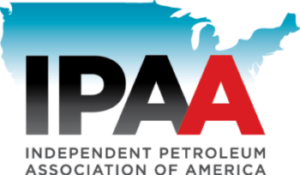Dec 4, 2014 Opinion: Methane emission reductions: An industry priority goes unrecognized (The Hill)
“Since 2008, U.S. shale gas production has grown 400 percent, while methane emissions have declined 13.3 percent… Despite this progress, fossil fuel opponents are pressuring EPA to implement additional and duplicative regulations under Section 111(d) of the Clean Air Act to further target methane emissions from existing oil and natural gas upstream operations.”

Methane emission reductions: An industry priority goes unrecognized
By Barry Russell, Independent Petroleum Association of America President
The Hill
December 4, 2014
Since stepping foot in the Oval Office, President Obama has made addressing greenhouse gas (GHG) emissions a top priority for his presidency. As part of this goal, the administration recently released a Strategy for Reducing Methane emissions, which calls upon federal agencies to develop mandatory and voluntary policies to further reduce methane emissions in the United States.
So how does the oil and natural gas industry fit in?
Methane emissions from oil and natural gas production and exploration account for roughly 1.1 to 1.3 percent of total U.S. GHG emissions. Under the new methane strategy, the Environmental Protection Agency (EPA) will determine how to further reduce these methane emissions from certain sources in the oil and natural gas sector.
What the president’s strategy fails to note, however, is that the oil and natural gas industry has already substantially reduced methane emissions.
Since 2008, U.S. shale gas production has grown 400 percent, while methane emissions have declined 13.3 percent. As the EPA itself stated, this accomplishment is largely “due to increased voluntary reductions” by the industry, such as increased monitoring of equipment and implementation of green completion technology. Further reductions are also anticipated as “green” or “reduced emission completions” are phased-in through current EPA regulations.
Methane emissions have also decreased alongside decreasing Volatile Organic Compound (VOC) emissions from natural gas wells utilizing hydraulic fracturing. In 2012, EPA finalized a Clean Air Act Section 111(b) New Source Performance Standard (NSPS) targeting VOCs from these wells. Since VOCs and methane are released at the same time from the same equipment, reducing one means reducing the other, providing a net emissions reduction from one regulatory mandate.
As EPA’s latest GHG Reporting Program highlights, these reductions are substantial. According to EPA, “reported methane emissions from petroleum and natural gas systems sector have decreased by 12 percent since 2011.” The EPA added that the largest reductions came from hydraulically fractured natural gas wells, “which have decreased by 73 percent during that period.” The agency expects to see further emission reductions as the 2012 standards continue to be implemented.
Many saw these emission reductions as something to celebrate, an accomplishment made possible by investment and dedication from America’s independent oil and natural gas producers. As U.S. Energy Department Secretary Ernest Moniz said earlier this year, “more than half I believe now of the current frack jobs are so-called green completions, where the methane is captured and is for economic benefit.”
Despite this progress, fossil fuel opponents are pressuring EPA to implement additional and duplicative regulations under Section 111(d) of the Clean Air Act to further target methane emissions from existing oil and natural gas upstream operations.
This would create a complex and burdensome regulatory regime for the industry and regulators alike, and for what?
For starters, the measure is an ineffective way of targeting small GHG-emitting sources like oil and gas wells, requiring immense agency resources for few methane emission reduction benefits. It is unlikely that state regulators or EPA have the capacity to deal with the influx of permit requests or compliance requirements for these sources. If the standard cannot even be properly implemented, how will it be effective in reducing emissions?
These challenges are compounded by EPA actions to revise the National Ambient Air Quality Standard (NAAQS) for ozone, a process that also relies on states for implementation. Because regulation of VOCs is a part of ozone regulations, action on VOCs and ozone will also reduce methane emissions. If EPA pursues additional action on methane against oil and natural gas exploration and production activities, it will be implementing duplicative and costly plans to target the same emissions.
EPA should take a simpler approach, similar to what the agency has already done for manure management in the agriculture sector, an activity that accounts for roughly the same level of emissions as those from oil and natural gas production activities. Here, the Administration proposed the Biogas Opportunities Roadmap, which avoids a prescriptive regulatory regime — potentially targeting every cow or every farm — and instead commits to exclusively voluntary industry efforts to reduce methane emissions. Likewise, EPA should identify some agreed upon, cost effective, and voluntary steps to further reduce methane emissions from oil and natural gas beyond existing requirements.
A clear, effective, and reliable regulatory framework is critical to the future development of both America’s vast energy resources and the protection of our environment. The oil and natural gas industry has already implemented effective emissions reduction measures, and as the EPA itself has stated, emissions are already declining. Adding burdensome, duplicative methane regulations is the wrong answer — for this industry, the administration, and the environment.
Russell is president and CEO of the Independent Petroleum Association of America, the leading, national upstream trade association representing oil and natural gas producers that drill 95 percent of the nation’s oil and natural gas wells. These companies account for 54 percent of America’s oil production, 85 percent of its natural gas production, and support more than 2.1 million American jobs. For more information, visit www.ipaa.org.








